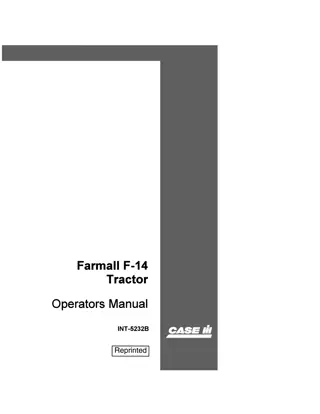
Flow-based Measurement Challenges and Solutions
Explore the challenges and solutions in flow-based measurement, including heavy hitter detection, dynamic resource allocation, and multiplexing resources among tasks. Discover the DREAM framework's TCAM-based measurement approach and how it addresses these issues.
Download Presentation

Please find below an Image/Link to download the presentation.
The content on the website is provided AS IS for your information and personal use only. It may not be sold, licensed, or shared on other websites without obtaining consent from the author. If you encounter any issues during the download, it is possible that the publisher has removed the file from their server.
You are allowed to download the files provided on this website for personal or commercial use, subject to the condition that they are used lawfully. All files are the property of their respective owners.
The content on the website is provided AS IS for your information and personal use only. It may not be sold, licensed, or shared on other websites without obtaining consent from the author.
E N D
Presentation Transcript
Dream Slides Courtesy of Minlan Yu (USC) 1
Challenges in Flow-based Measurement Many Management tasks Controller Heavy Hitter detection Change detection Heavy Hitter detection Heavy Hitter detection H Dynamic Resource Allocator 1 1 Configure resources (Re)Configure resources 2 Fetch statistics Limited resources (<4K TCAM) 2
Last Class: OpenSketch Use sketch to perform measurements Sketches are very efficient (space wise) Requites a combination of TCAM and SRAM Requires the same flow to go through multiple stages Sketches have 3 phases. Many OpenFlow 1.0 switches don t support multi-stage matching OpenFlow 1.3> supports some multi-stage matching 3
Recall To make accuracy gurantees You need to know traffic matrix You need to know for given algorithm what is the space to accuracy trade-off 5
Diminishing return of resources Tradeoff accuracy for more resources More resources make smaller accuracy gains Operators can accept an accuracy bound <100% 1 detected true HH/all 0.8 0.6 Recall= Recall 0.4 0.2 0 256512 1024 Resources 2048 Challenge: No ground truth of resource-accuracy 6
Spatial/Temporal Resource Multiplexing Temporal multiplexing across tasks Traffic varies over time, and accuracy depends on traffic Spatial multiplexing across switches A task needs different resources across switches 1 detected true HH/all 1 Recall= 2 2 Switch 1 Switch 2 Challenge: Handle traffic and task dynamics across switches 7
Multiplexing Resources Among Tasks A task may need more resources At a specific time At a specific switch But we can multiplex 1 1 1 1 2 2 2 2 Switch 2 Time=0 Time=1 Switch 1 Spatial multiplex Temporal multiplex 8
DREAM Framework Controller TCAM-based Measurement Framework Estimated accuracy Estimated accuracy Allocated resource Allocated resource Dynamic Resource Allocator 1 1 Configure resources (Re)Configure resources 2 Fetch statistics 9
TCAM-based Measurement Framework General support for different types of tasks Heavy hitters, Hierarchical HHs, change detection Resource aware Maximize accuracy given limited resources Network-wide Measuring traffic from multiple switches Assume each flow is seen at one switch (e.g., at sources) 10
Challenges No ground truth of resource-accuracy Hard to do traditional convex optimization We propose new ways to estimate accuracy on the fly Adaptively increase/decrease resources accordingly Spatial & temporal changes Task and traffic dynamics across switches Temporal: Adjust resources based on traffic changes Spatial: Dynamically allocate resources across switches 11
Divide & Merge at Multiple Switches Divide: Monitor children to increase accuracy Requires more resources on a set of switches E.g., needs an additional entry on switch B 5 26 1** 0** {B} {A,B,C} {B} {B} {A,B} {B,C} 2 3 10* 11* 13 13 00* 01* Merge: Monitor parent to free resources Each node keeps the switch set it frees after merge Finding the least important prefixes to merge is the minimum set cover problem 12
Task Implementation Controller Heavy Hitter detection Change detection Heavy Hitter detection Heavy Hitter detection H Estimated accuracy Estimated accuracy Allocated resource Allocated resource Dynamic Resource Allocator 1 1 Configure resources (Re)Configure resources 2 Fetch statistics 13
Accuracy Estimation Leverage all the monitored counters Precision: every detected HH is a true HH Recall: Estimate missing HHs using counter and level Threshold=10 At level 2 missed <=2 HH 76 With size 26 missed <=2 HHs *** 26 50 0** 1** The error for our accuracy estimator for Heavy hitters is below 5% for real traffic traces 13 13 15 35 00* 01* 10* 11* 111 001 011 101 4 9 12 1 0 15 20 15 14 010 110 000 100
Dynamic Resource Allocator Controller Heavy Hitter detection Change detection Heavy Hitter detection Heavy Hitter detection H Estimated accuracy Estimated accuracy Allocated resource Allocated resource Dynamic Resource Allocator Decompose the resource allocator to each switch Each switch separately increase/decrease resources When and how to change resources? 15
Per-switch Resource Allocator: When? When a task on a switch needs more resources? Controller Detected HH: 14 out of 30 Global accuracy=47% Heavy Hitter detection Detected HH:5 out of 20 Local accuracy=25% Detected HH:9 out of 10 Local accuracy=90% A B Global accuracy is important if bound is 40%, no need to increase A s resources Local accuracy is important if bound is 80%, increasing B s resources is not helpful Conclusion: when max(local, global) < accuracy bound 16
Per-Switch Resource Allocator: How? How to adapt resources? Take from rich tasks (r=r-s), give to poor tasks (r=r+s) How much resource to take/give? Approach: Adaptive change step (s) for fast convergence Intuition: Small steps close to bound, large steps otherwise 1500 1500 1500 1500 1500 Goal Goal MM Goal MM AM Goal AM AM AA MA AA MA Additive increase in both AA and AM methods converges slowly when the goal changes decrease the step size fast to converge to a fixed value Multiplicative increase and AM AA MA 1000 1000 1000 1000 1000 Resource Resource Resource Resource Additive decrease cannot Multiplicative decrease has converges fast Resource AA 500 500 500 500 500 0 0 0 0 0 0 0 0 0 0 100 100 100 100 100 200 200 200 200 200 300 300 300 300 300 400 400 400 400 400 500 500 500 500 500 17 Time(s) Time(s) Time(s) Time(s) Time(s)
DREAM Overview Task type (Heavy hitter, Hierarchical heavy hitter, Change detection) Task specific parameters (HH threshold) Packet header field (source IP) Filter (src IP=10/24, dst IP=10.2/16) Accuracy bound (80%) Prototype Implementation with DREAM algorithms on Floodlight and Open vSwitches 1) Instantiate task 2) Accept/Reject 5) Report Task object n Task object 1 Resource Allocator 7) Allocate / Drop 6) Estimate accuracy DREAM SDN Controller 4) Fetch counters 3) Configure counters 18
Prototype Evaluation DREAM prototype DREAM algorithms in Floodlight controller 8 Open vSwitches Prototype evaluation 256 tasks (HH, HHH, CD, combination) 5 min tasks arriving in 20 mins Replaying 5 hours CAIDA trace Validate simulation using prototype 19
DREAM Conclusion Challenges with software-defined measurement Diverse and dynamic measurement tasks Limited resources at switches Dynamic resource allocation across tasks Accuracy estimators for TCAM-based algorithms Spatial and temporal resource multiplexing 20
Summary Software-defined measurement Measurement is important, yet underexplored SDN brings new opportunities to measurement Time to rebuild the entire measurement stack Our work OpenSketch:Generic, efficient measurement on sketches DREAM: Dynamic resource allocation for many tasks 21
Thanks! 22


